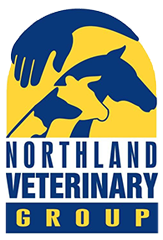Heifers: When is Mastitis not Mastitis? – When it is < 3 on the RMT.
Many heifers develop suspect mastitis, or subclinical mastitis found by RMT test positives soon after calving. So are these REAL infections, or nothing to be concerned about?
Using a Rapid Mastitis Test cut off score of 3 on a 1 – 3 scale on the 4th day of lactation correctly identified those infected with a major pathogen 86% of the time. (NB a score of 3 is really thick and snotty)
It also accurately indicated NON-infected quarters 99% of the time.
Heifer Mastitis: What to Do?
If RMT =3 these animals may be withheld from supply and re-tested several days later to see if they spontaneously cure, or they may be treated.
We would recommend treatment of these heifers with RMT scores of 3. This is because mastitis infections in 2 and 3 year old dairy cows limits udder tissue formation, which will limit lifetime production.
Treatment: In many cases, a cow or heifer with mastitis in one quarter may have clinical or sub-clinical mastitis in some of the others. Hence treatment with intra-mammaries into one quarter may not always treat the whole problem. Injections will treat all quarters in this situation.
A high single dose of procaine penicillin (Masticillin) has been shown to be effective in treating heifer mastitis. This has been used pre-calving in problem heifer mobs, but the calf then has a meat withholding.
Research from Southland has shown that a single dose of Masticillin at the first milking post-calving significantly reduced the odds of developing infection before the 100th day of lactation, mainly by reducing mastitis in the first 7 days of lactation.
Prevention using a teat sealant is the BEST solution to heifer mastitis problems.
Teat Sealing Heifers Stops Mastitis:
If heifer mastitis in your herd is an issue, using teat sealants 4-6 weeks prior to calving is by far the best and most cost-effective way to deal with the problem. This is because infection gets into the quarter well before calving, and ticks away until calving, when it is discovered. Blocking the teat before the udder springs stops this happening.
Heifer mastitis will adversely affect lifetime production even if the quarter is not lost, so the economics of prevention is extremely good.
If you are planning to use teat sealant on your heifers, please contact the clinic to put in your order ASAP. Our Farm Vets are happy to discuss how to go about this if this is your first year teat sealing heifers, and we are able to send a team out to do the job for you if required, or provide staff training (Ensure you book ahead of time to use this service, please.)


